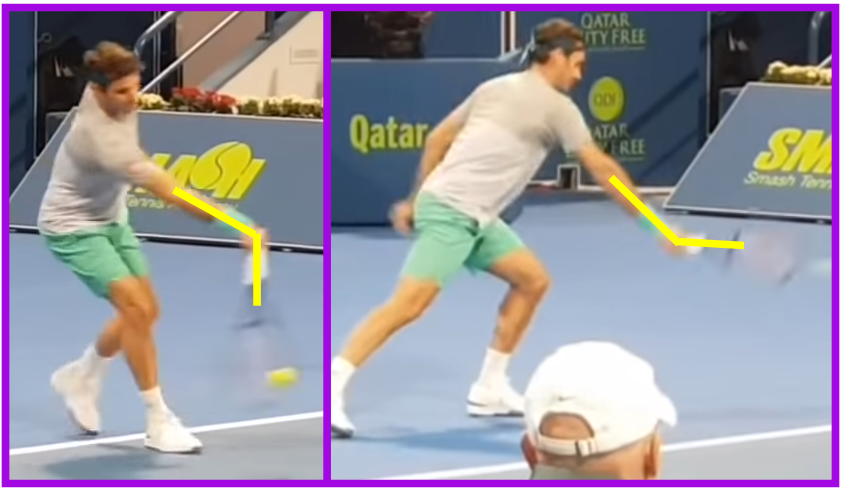Many people assume that “touch” and “feel” are simply natural talents. They are not – like everything else in tennis, touch and feel can be trained. While there certainly are players who, with practically no coaching, will quickly develop an impressive feel for the game, that doesn’t mean that feel is unattainable for the rest of us.
Quite the opposite, in fact. Precisely because players like Roger Federer are such naturals, we mortals are able to learn which biomechanical alignments are useful for developing feel, and which ones aren’t by studying them.
The Mechanics of Feel
This video (timestamped at 2:22) is the best, most informative practice video I’ve ever seen when it comes to studying feel. It showcases the most important concept that creates feel in every situation – The Fundamental Theorem of Tennis.
From The Fault Tolerant Forehand section – Two Rules that Govern EVERY Shot
The Fundamental Theorem of Tennis is two rules that govern every shot in the game. They are as follows:
1. The racket makes a 90-135 degree angle with the forearm
2. The racket strikes the ball in front of the body (or, in a pinch, in front of the forearm)
Any shot which follows these two rules will work.
No matter what shot Roger is hitting, he always catches the ball in front of him, and there is always an angle between his racket and his forearm. He adjusts his entire arm when he has to adjust – he does not adjust by straightening out his wrist.

That’s really all there is to feel. Whether you’re playing a forehand slice, backhand slice, forehand block, backhand block, drop shot, or even a regular forehand or backhand, gaining a feel for the ball is as simple as gaining an understanding of how to adjust your racket in space without straightening out your forearm-racket angle and without catching the ball late.
Practicing Feel
Feel is a skill that you can practice and master, just like the forehand or backhand.
Mini-tennis is a great drill for it – you and your partner stand on opposite service lines and lightly hit the ball back and forth across the net. Relax your hand, but use just enough tension to maintain your 90-135 degree angle.

Focus on hitting the ball in front and focus on adjusting your entire arm–racket system to the ball, rather than just your racket. Play around with taking the ball earlier than feels natural – the correct contact point on a touch shot will often initially feel quite far in front of you.
None of the power of your shot comes from your forearm – your forearm merely stabilizes the racket during the stroke. Use can use a slight body rotation, or you can use your chest to gently pull your entire racket-arm system forward, but do not use the muscles of your hand and wrist to swing – that causes misses and injury.
If you prefer a competitive setting, doubles tennis is the way to go for feel training. In doubles, you’ll see all sorts of low shots, short shots, and shots you need to play quickly out of position that necessitate great feel to execute.
Keep your racket in front, and keep your forearm-racket angle set.
I guarantee you’ll slowly develop that coveted feel that makes tennis so fun to play.




